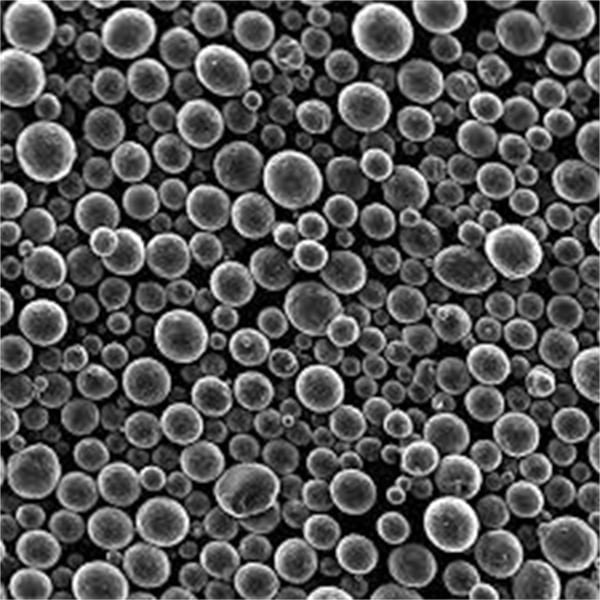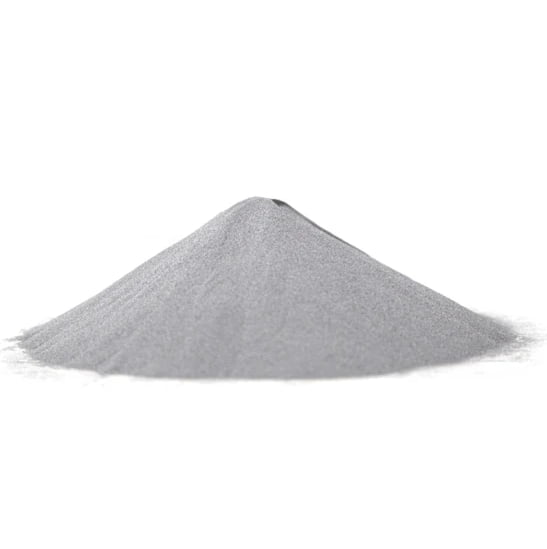De transformatie van SLM in de lucht- en ruimtevaart
Inhoudsopgave
De lucht- en ruimtevaartindustrie is altijd een pionier geweest in het verleggen van de grenzen van ontwerp en technologie. Stel je een wereld voor waarin vliegtuigen lichter, sterker en zuiniger zijn. Deze droom wordt werkelijkheid dankzij Selective Laser Melting (SLM), een revolutionaire 3D printtechniek die opzien baart. SLM verandert de manier waarop luchtvaartonderdelen worden gemaakt en opent deuren naar innovatieve ontwerpen en optimalisatie van prestaties. Maar hoe neemt SLM precies een vlucht in de wereld van vliegtuigen, raketten en nog veel meer? Laten we eens dieper ingaan op de specifieke toepassingen van SLM in de luchtvaartindustrie.

Metaalpoeders voor ruimtevaart SLM
Het hart van SLM wordt gevormd door de magie van metaalpoeders. Deze fijne, metalen deeltjes worden minutieus gelaagd en samengesmolten door een krachtige laser, waardoor complexe 3D-structuren worden gecreëerd. Het specifieke metaalpoeder dat wordt gebruikt, speelt een cruciale rol bij het bepalen van de eigenschappen en prestaties van het uiteindelijke onderdeel. Hier volgt een nadere blik op enkele van de belangrijkste metaalpoeders die worden gebruikt in SLM voor ruimtevaarttoepassingen:
Metaalpoeders voor ruimtevaart SLM
| Metaalpoeder | Samenstelling | Eigenschappen | Kenmerken | Toepassingen in lucht- en ruimtevaart |
|---|---|---|---|---|
| Titaanlegeringen (Ti-6Al-4V, Ti-6Al-4V ELI) | Titaan (Ti), aluminium (Al), vanadium (V) | Hoge sterkte-gewichtsverhouding, uitstekende corrosiebestendigheid, biocompatibel | Poederdeeltjes zijn bolvormig voor optimale stroming en lasersmelten | Turbinebladen, onderdelen van landingsgestellen, structurele onderdelen van vliegtuigrompen, |
| Superlegeringen op basis van nikkel (Inconel 625, Inconel 718) | Nikkel (Ni), chroom (Cr), kobalt (Co), molybdeen (Mo) en andere elementen | Hoge temperatuursterkte, oxidatieweerstand | Moeilijker te verwerken in vergelijking met titaniumlegeringen | Turbineschijven, bekleding van verbrandingsmotoren, onderdelen van naverbranders |
| Aluminiumlegeringen (AlSi10Mg, Scalmalloy) | Aluminium (Al), Silicium (Si), Magnesium (Mg) | Lichtgewicht, goede sterkte, lasbaarheid | Biedt een hoge thermische geleidbaarheid in vergelijking met andere legeringen | Warmtewisselaars, vleugelonderdelen, romponderdelen |
| Kobaltchroom (CoCr) | Kobalt (Co), Chroom (Cr) | Hoge slijtvastheid, biocompatibel | Vaak gebruikt in medische toepassingen, steeds meer gebruikt in de ruimtevaart voor specifieke slijtdelen | Lagers, tandwielen, onderdelen van landingsgestellen |
| Roestvrij staal (316L, 17-4 PH) | IJzer (Fe), Chroom (Cr), Nikkel (Ni), Molybdeen (Mo) | Corrosiebestendigheid, goede sterkte | Relatief betaalbaar vergeleken met andere metaalpoeders | Onderdelen van vloeistofsystemen, structurele onderdelen die een goede corrosiebestendigheid vereisen |
| Koperlegeringen (CuNi) | Koper (Cu), Nikkel (Ni) | Hoge thermische geleidbaarheid, goede elektrische geleidbaarheid | Gebruikt voor toepassingen die een efficiënte warmteoverdracht vereisen | Koellichamen, rails voor elektrische systemen |
| Tantaal (Ta) | Tantaal (Ta) | Hoog smeltpunt, uitstekende corrosiebestendigheid | Relatief duur metaalpoeder | Kroesvoeringen voor toepassingen met hoge temperaturen, hitteschilden |
| Molybdeen (Mo) | Molybdeen (Mo) | Hoog smeltpunt, goede thermische geleidbaarheid | Gebruikt in combinatie met andere metalen in superlegeringen | Hoge temperatuur componenten in raketmotoren |
| Wolfraam (W) | Wolfraam (W) | Zeer hoog smeltpunt, uitstekende slijtvastheid | Moeilijk te verwerken door hoog smeltpunt | Straalpijpen voor raketmotoren, hitteschilden voor terugkeervoertuigen |
| Inconel additief vervaardigd (AM) | Nikkel (Ni), chroom (Cr), kobalt (Co), molybdeen (Mo) en andere elementen | Eigenschappen op maat door AM-proces | Hiermee kunnen unieke microstructuren met specifieke eigenschappen worden gemaakt | Krachtige turbinebladen met geoptimaliseerde koelkanalen |
Zoals u kunt zien is de selectie van metaalpoeders voor SLM in de lucht- en ruimtevaart enorm en zorgvuldig gekozen op basis van de eisen van de specifieke toepassing. Van de robuuste sterkte van titaniumlegeringen voor turbineschoepen tot de lichtgewicht efficiëntie van aluminium voor onderdelen van vliegtuigrompen, SLM maakt het mogelijk om onderdelen te maken met uitzonderlijke eigenschappen die voorheen onbereikbaar waren met traditionele productiemethoden.
Toepassingen van SLM in Ruimtevaart
De impact van SLM in de lucht- en ruimtevaart gaat veel verder dan alleen de gebruikte materialen. Deze technologie zorgt voor een revolutie in de manier waarop vliegtuigonderdelen worden ontworpen en gefabriceerd, wat leidt tot een nieuw tijdperk van innovatie. Hier volgen enkele van de belangrijkste toepassingen van SLM in de lucht- en ruimtevaart:
SLM-toepassingen in de ruimtevaart
| Sollicitatie | Voordelen | Voorbeelden |
|---|---|---|
| Turbinebladen | Complexe interne koelkanalen voor verbeterde efficiëntie, lager gewicht, mogelijkheid om ingewikkelde bladgeometrieën te maken voor betere prestaties | Hogedrukturbinebladen, lagedrukturbinebladen, blisks (geïntegreerde turbinebladen en schijven) |
| Landingsgestelonderdelen | Lichter gewicht voor betere brandstofefficiëntie, ontwerpvrijheid voor complexe roosterstructuren voor betere schokabsorptie | Landingsgestelsteunen, steunen, structurele onderdelen |
| Constructiedelen casco | Topologieoptimalisatie voor gewichtsvermindering, mogelijkheid om complexe vormen te produceren die moeilijk te maken zijn met traditionele methoden | Ribben, langsliggers, gordingen (structurele elementen) |
| Verbrandingsvoeringen | Conforme koelkanalen voor verbeterd thermisch beheer, mogelijkheid om ingewikkelde oppervlaktekenmerken te maken voor betere brandstof-luchtmenging | Brandervoeringen voor verbeterde efficiëntie en lagere emissies |
| Warmtewisselaars | Lichtgewicht ontwerpen met een groot oppervlak voor efficiënte warmteoverdracht | Lucht-lucht warmtewisselaars, oliekoelers |
| Satelliet Onderdelen | Minder gewicht voor meer laadvermogen, de mogelijkheid om ingewikkelde structuren te maken voor specifieke functionaliteiten | Beugels, antennes, structurele onderdelen |
| Onderdelen voor raketmotoren | Hoge temperatuurbestendige materialen voor extreme omgevingen, mogelijkheid om complexe koelkanalen te maken voor warmtebeheer | Straalpijpen, verbrandingskamers, stuwkamers |
De voordelen van het gebruik van SLM in deze toepassingen zijn talrijk. Zo zorgt de mogelijkheid om ingewikkelde interne koelkanalen te maken in turbinebladen voor een efficiënter warmtebeheer, wat leidt tot betere motorprestaties en een lager brandstofverbruik. Ook kunnen met SLM lichtgewicht componenten voor vliegtuigrompen en landingsgestellen worden ontworpen en gefabriceerd, wat direct bijdraagt aan een lager brandstofverbruik en een grotere actieradius van vliegtuigen. Bovendien stelt SLM ingenieurs in staat om complexe geometrieën te maken die voorheen onmogelijk waren met traditionele productietechnieken, waardoor nieuwe mogelijkheden ontstaan voor ontwerpoptimalisatie en prestatieverbetering.
Uitdagingen en overwegingen voor SLM in Ruimtevaart
Hoewel SLM enorme mogelijkheden biedt voor de luchtvaartindustrie, zijn er nog steeds uitdagingen te overwinnen. Hier volgen enkele belangrijke overwegingen voor het gebruik van SLM in ruimtevaarttoepassingen:
- Machine- en poederkosten: SLM-machines zijn momenteel duur en metaalpoeders die speciaal zijn ontworpen voor ruimtevaarttoepassingen kunnen duur zijn.
- Procescontrole en kwalificatie: SLM is een complex proces dat een strikte controle van de parameters vereist om een consistente en betrouwbare kwaliteit van de onderdelen te garanderen. De kwalificatie van het SLM proces voor luchtvaartonderdelen vereist strenge test- en certificatieprocedures.
- Oppervlakteruwheid: SLM onderdelen kunnen een ruwere oppervlakteafwerking hebben dan traditioneel vervaardigde onderdelen. Nabewerkingstechnieken zoals machinaal bewerken of polijsten kunnen nodig zijn, afhankelijk van de toepassing.
- Beperkingen in onderdeelgrootte: De huidige SLM-machines hebben beperkingen wat betreft de grootte van de onderdelen die ze kunnen produceren. Voor de productie van grotere onderdelen voor de lucht- en ruimtevaart zijn mogelijk segmentatie en assemblage van meerdere SLM-geprinte onderdelen nodig.
Ondanks deze uitdagingen zijn de potentiële voordelen van SLM onmiskenbaar. Naarmate de technologie zich verder ontwikkelt en de productiekosten dalen, is SLM klaar om een algemene productiemethode voor de lucht- en ruimtevaartindustrie te worden. Onderzoek en ontwikkeling verbeteren voortdurend de mogelijkheden van de machines, de kwaliteit van het poeder en de procesbeheersing, waardoor de weg wordt vrijgemaakt voor een bredere toepassing van SLM. SLM in de komende jaren.

FAQ
V: Wat zijn de voordelen van het gebruik van SLM voor luchtvaartonderdelen?
A: SLM biedt verschillende voordelen, waaronder:
- Lichtgewicht onderdelen: Met SLM kunnen lichtere onderdelen worden gemaakt dan met traditionele productiemethoden, wat leidt tot een efficiënter brandstofverbruik en een groter vliegbereik.
- Ontwerpvrijheid: Met SLM kunnen complexe geometrieën worden ontworpen en gefabriceerd die voorheen onmogelijk waren met traditionele technieken, waardoor nieuwe mogelijkheden voor prestatieoptimalisatie worden ontsloten.
- Materiaaleigenschappen: SLM onderdelen kunnen gemaakt worden van hoogwaardige materialen met uitzonderlijke eigenschappen zoals een hoge sterkte-gewichtsverhouding en weerstand tegen hoge temperaturen.
- Minder afval: SLM is een efficiënter proces in vergelijking met traditionele methoden, waarbij minder materiaalafval ontstaat.
V: Wat zijn de beperkingen van het gebruik van SLM voor luchtvaartonderdelen?
A: Enkele beperkingen van SLM in de ruimtevaart zijn:
- Machine- en poederkosten: SLM-machines en metaalpoeders kunnen duur zijn, wat invloed heeft op de productiekosten.
- Procescontrole en kwalificatie: SLM vereist een strikte controle van de parameters en strenge kwalificatieprocedures voor ruimtevaarttoepassingen.
- Oppervlakteruwheid: SLM onderdelen kunnen nabewerking nodig hebben voor een gladdere oppervlakteafwerking, afhankelijk van de toepassing.
- Beperkingen aan de onderdeelgrootte: De huidige SLM-machines hebben beperkingen wat betreft de grootte van de onderdelen die ze kunnen produceren.
V: Wat zijn enkele toekomstige ontwikkelingen die verwacht worden in SLM voor ruimtevaarttoepassingen?
A: De toekomst van SLM in de lucht- en ruimtevaart is rooskleurig en er worden verschillende verbeteringen verwacht:
- Lagere machine- en poederkosten: Naarmate de technologie volwassener wordt, zullen de productiekosten voor zowel SLM-machines als metaalpoeders naar verwachting dalen, waardoor SLM toegankelijker wordt voor bredere toepassing.
- Grotere bouwvolumes: De ontwikkeling van grotere SLM-machines met grotere bouwvolumes zal de productie van grotere luchtvaartonderdelen mogelijk maken, waardoor segmentering en assemblage niet meer nodig zijn.
- Multi-materiaal SLM: Vooruitgang in de SLM-technologie zou het mogelijk kunnen maken om onderdelen te printen met meerdere materialen in een enkele build, waardoor onderdelen ontstaan met verschillende eigenschappen voor optimale prestaties.
- In-situ procesbewaking en -regeling: Real-time bewaking en controle van het SLM proces zorgt voor een consistente productkwaliteit en vermindert het risico op defecten.
- Automatisering en integratie: Meer automatisering en integratie van SLM met andere productieprocessen zal de productieworkflows stroomlijnen en de efficiëntie verbeteren.
V: Is SLM de toekomst van luchtvaartproductie?
A: Hoewel SLM waarschijnlijk niet alle traditionele productiemethoden in de lucht- en ruimtevaart zal vervangen, zorgt het ongetwijfeld voor een revolutie in deze sector. Het vermogen van SLM om lichtgewicht, hoogwaardige componenten met ingewikkelde ontwerpen te maken, maakt het ideaal voor een breed scala aan ruimtevaarttoepassingen. Naarmate de technologie zich verder ontwikkelt en haar beperkingen overwint, is SLM klaar om een dominante kracht te worden in het vormgeven van de toekomst van de lucht- en ruimtevaartindustrie.
Conclusie
Selective Laser Melting (SLM) verandert de manier waarop vliegtuigen worden ontworpen en gefabriceerd. Deze innovatieve 3D printtechnologie biedt een unieke combinatie van ontwerpvrijheid, materiaaleigenschappen en mogelijkheden om het gewicht te verminderen, waardoor de grenzen van wat mogelijk is in de luchtvaartindustrie worden verlegd. Van lichtere, zuinigere vliegtuigen tot raketten die nieuwe hoogten kunnen bereiken, SLM speelt een cruciale rol bij het vormgeven van de toekomst van het vliegen. Naarmate de technologie zich verder ontwikkelt en de uitdagingen overwint, is de sky the limit voor de transformatieve kracht van SLM in de lucht- en ruimtevaart.
Delen op
MET3DP Technology Co, LTD is een toonaangevende leverancier van additieve productieoplossingen met hoofdkantoor in Qingdao, China. Ons bedrijf is gespecialiseerd in 3D printapparatuur en hoogwaardige metaalpoeders voor industriële toepassingen.
Onderzoek om de beste prijs en een op maat gemaakte oplossing voor uw bedrijf te krijgen!
gerelateerde artikelen
Over Met3DP
Recente update
Ons product
NEEM CONTACT MET ONS OP
Nog vragen? Stuur ons nu een bericht! Na ontvangst van uw bericht behandelen wij uw verzoek met een heel team.

Metaalpoeders voor 3D printen en additieve productie
BEDRIJF
PRODUCT
contact informatie
- Qingdao-stad, Shandong, China
- [email protected]
- [email protected]
- +86 19116340731

















